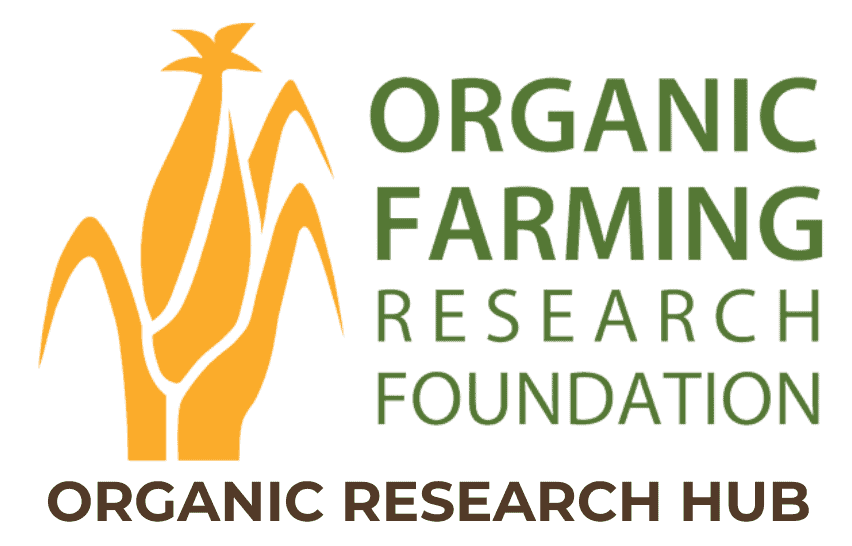Evaluating Pollination and Weed Control Strategies in Mesotunnel Systems for Organic Muskmelon Production
Project Director: Kephas Mphande, Iowa State University
Project overview
Bacterial wilt, a disease caused by pathogens carried by spotted and striped cucumber beetles, poses a significant threat to cucurbit producers. Organic cucurbit producers are particularly at-risk, since there are limited options for effectively managing pests without the use of synthetic insecticides. Several physical exclusion strategies (i.e. low/high tunnels, insect netting) have been tested at small scales with variable success (given challenges to pollination and weed control). Mesotunnels, which are 3.5-ft tall barriers covered with a nylon mesh insect netting, are an intermediate between low and high tunnels and have the potential to protect cucurbit crops for the entire growing season at a lower cost.
This study evaluated several pollination and weed control strategies within mesotunnels for organic Athena muskmelon production systems.

Farmer takeaways
- Full-season mesotunnel coverage may provide superior protection from insect pests (i.e. striped and spotted cucumber beetles) and insect-borne diseases (i.e. bacterial wilt) than other mesotunnel systems, resulting in higher marketable muskmelon yields at harvest.
- Despite higher materials costs for the full-season treatment, full-season mesotunnels may still be the most cost-efficient option for Athena muskmelon growers, as the full-season treatment was resulted in substantially higher yields than other treatments.
Project objectives and approach
Evaluate pollination strategies and insect pest/disease prevalence under mesotunnels in commercial-scale organic Athena muskmelon plots
- Treatments for the pollination trial included: (1) full-season: mesotunnels remained closed for the entire growing season (from transplant to harvest), with a bumblebee hive introduced when the first female flowers appeared (approximately 3 weeks after transplanting); (2) open-ends: mesotunnel netting was opened at both ends for 2 weeks during bloom, then resealed; (3) on-off-on: the entire length of the mesotunnel netting on a 150-ft subplot was removed for 2 weeks during bloom, then resealed.
- Bumble bee activity was monitored regularly for each treatment, and at the end of the growing season, data was collected on Athena muskmelon yield (total, marketable, and unmarketable).
- Data was collected regularly on insect pest prevalence and disease symptoms. If/when standard thresholds for pest/disease prevalence were surpassed, appropriate NOP-compliant control methods were deployed, including the application of copper hydroxide for fungal diseases and neem oil/pyrethrins/kaolin clay for cucumber beetles.
Evaluate the effectiveness of living mulches as an alternative weed control strategy in mesotunnels
- Treatments for the weed control trial included: (1) landscape fabric covering the furrows between plastic-mulched rows; (2) teff sown in the furrows and mowed 3 weeks after seeding; (3) teff sown in the furrows and not mowed; (4) bare ground with mowing 3 weeks after transplanting; and (5) bare ground with no mowing.
- Two days before the first muskmelon harvest, weeds were sampled, oven-dried, and weighed.
Compare the economic efficiency of each pollination and living mulch strategy
- A partial budget analysis incorporating revenue and costs of materials and labor was performed to compare the relative cost-efficiency of each pollination and weed control treatment.
Key findings
Pollinator activity is positively correlated with Athena muskmelon yields, with full-season mesotunnels allowing greater pollinator activity than the on-off-on and open-ends mesotunnel systems
- The full-season treatment had the highest marketable yield during all three years and was significantly higher than that of the other two treatments in both 2020 and 2021.
- Athena muskmelon yield was positively correlated with pollinator activity. Treatments with higher numbers of bumblebee visits to flowers (full-season and on-off-on treatments, respectively) experienced greater yields at harvest than treatments with lower or spatially-inconsistent bumblebee visits (open-ends treatment).
Full-season mesotunnels may provide significantly stronger insect pest and disease prevention for Athena muskmelons than either open-end or on-off-on mesotunnel systems
- The full-season treatment was the most effective at excluding insect pests (most notably, striped and spotted cucumber beetles). The on-off-on treatment had the highest number of insect pests of the three mesotunnel treatments.
- The full-season treatment was the most effective at preventing bacterial wilt in Athena muskmelons.
Resources
Mphande, K., S. Badilla-Arias, N. Cheng, J.F. González-Acuña, A. Nair, W. Zhang, and M.L. Gleason. 2024. Evaluating Pollination and Weed Control Strategies under Mesotunnel Systems for Organic Muskmelon Production in Iowa. HortTechnology 34:265-279.
Read MoreLocation
IowaCollaborators
Sharon Badilla-Arias, Iowa State University
Nieyan Cheng, Iowa State University
Jose Gonzalez-Acuna, Iowa State University
Ajay Nair, Iowa State University
Wendong Zhang, Cornell University
Mark Gleason, Iowa State University
Region
North Central
Topic
Weed Management, Disease Management, Insect/Pest Management
Category
Vegetables/Fruits
Year Published
2024



